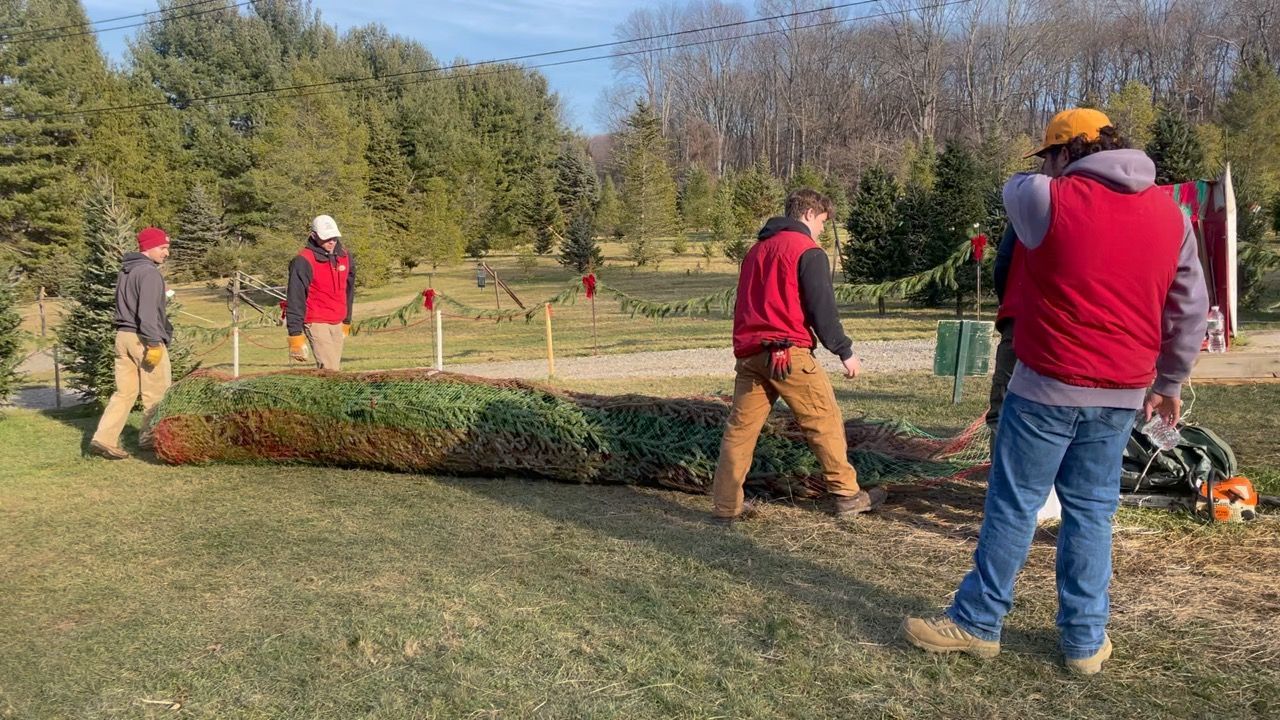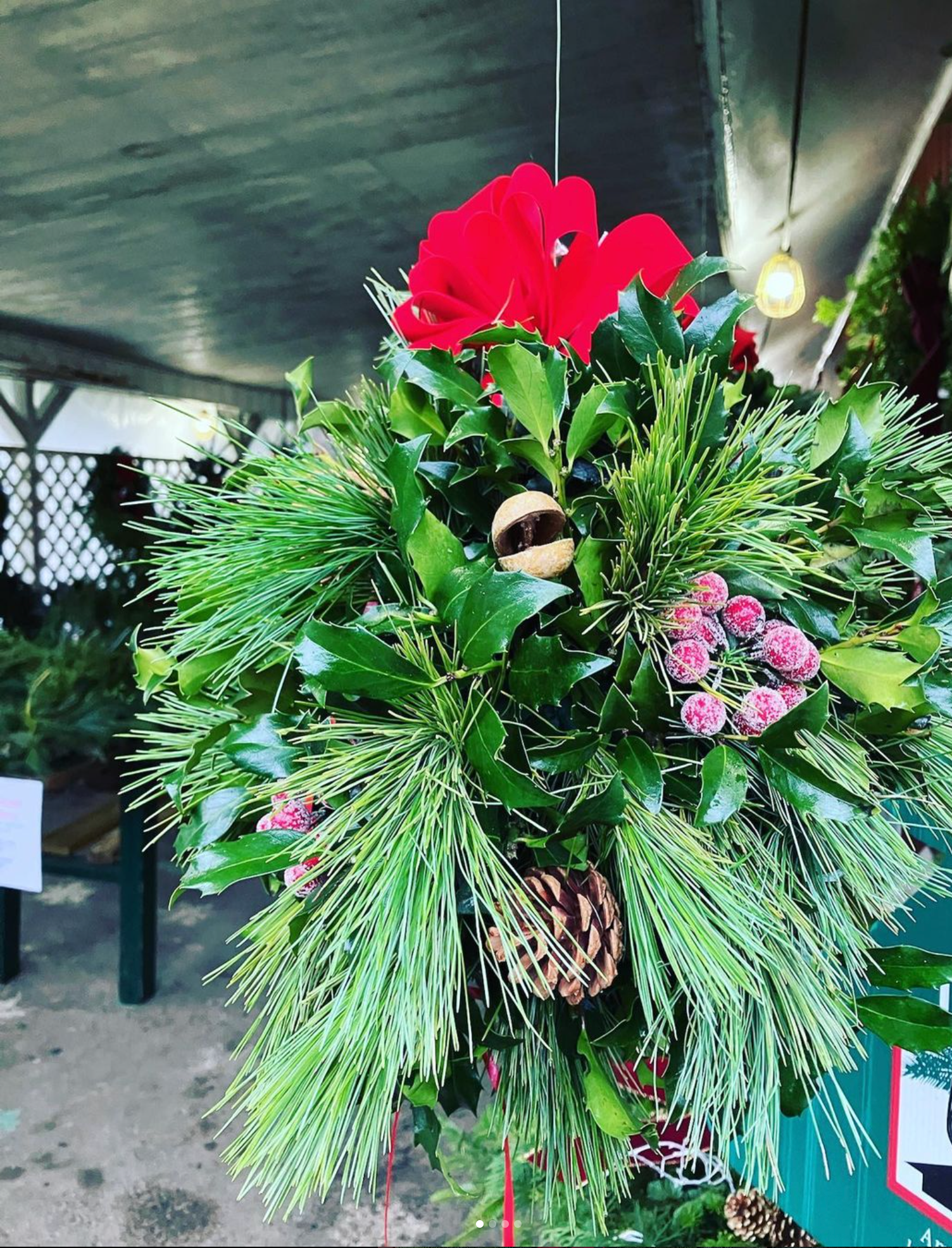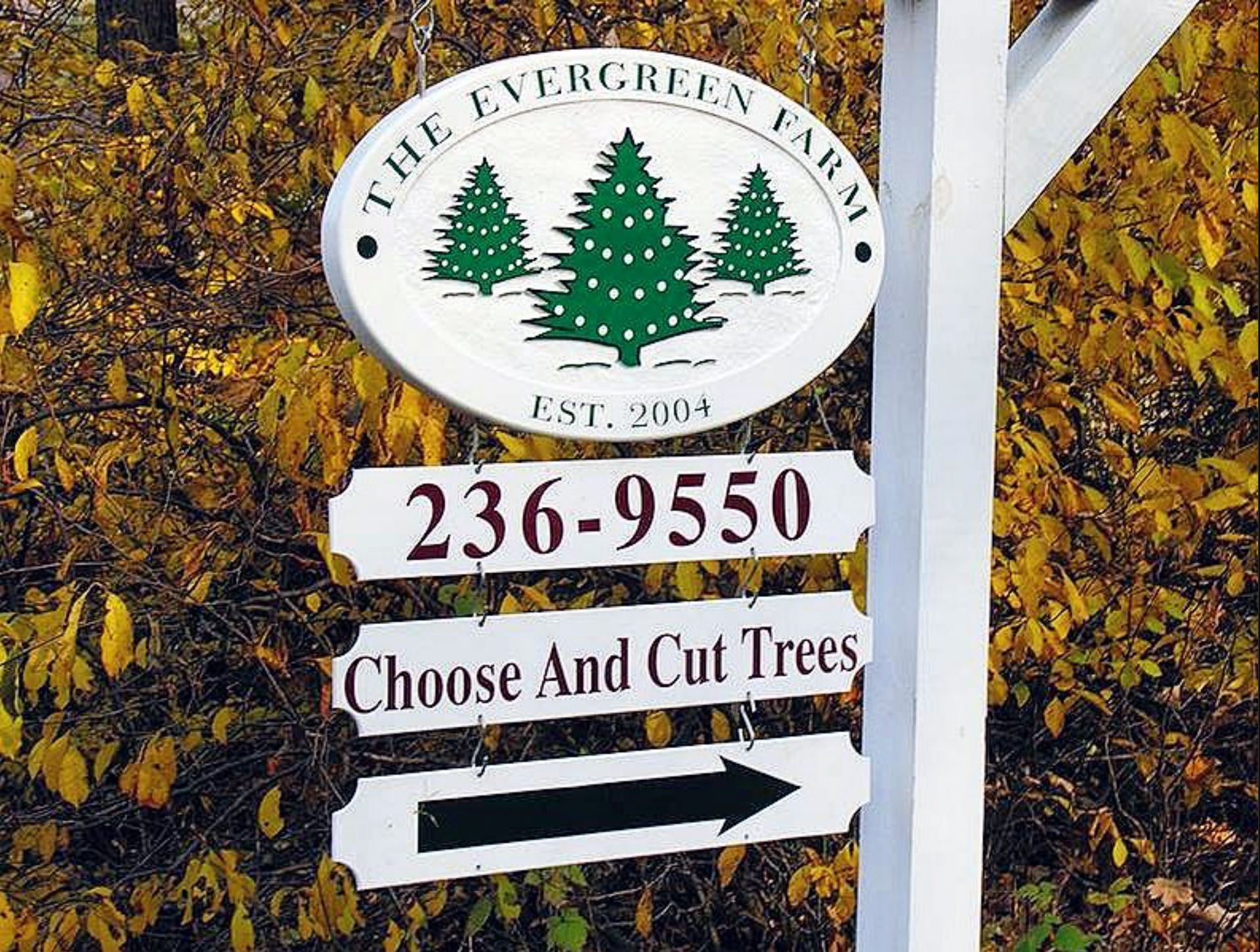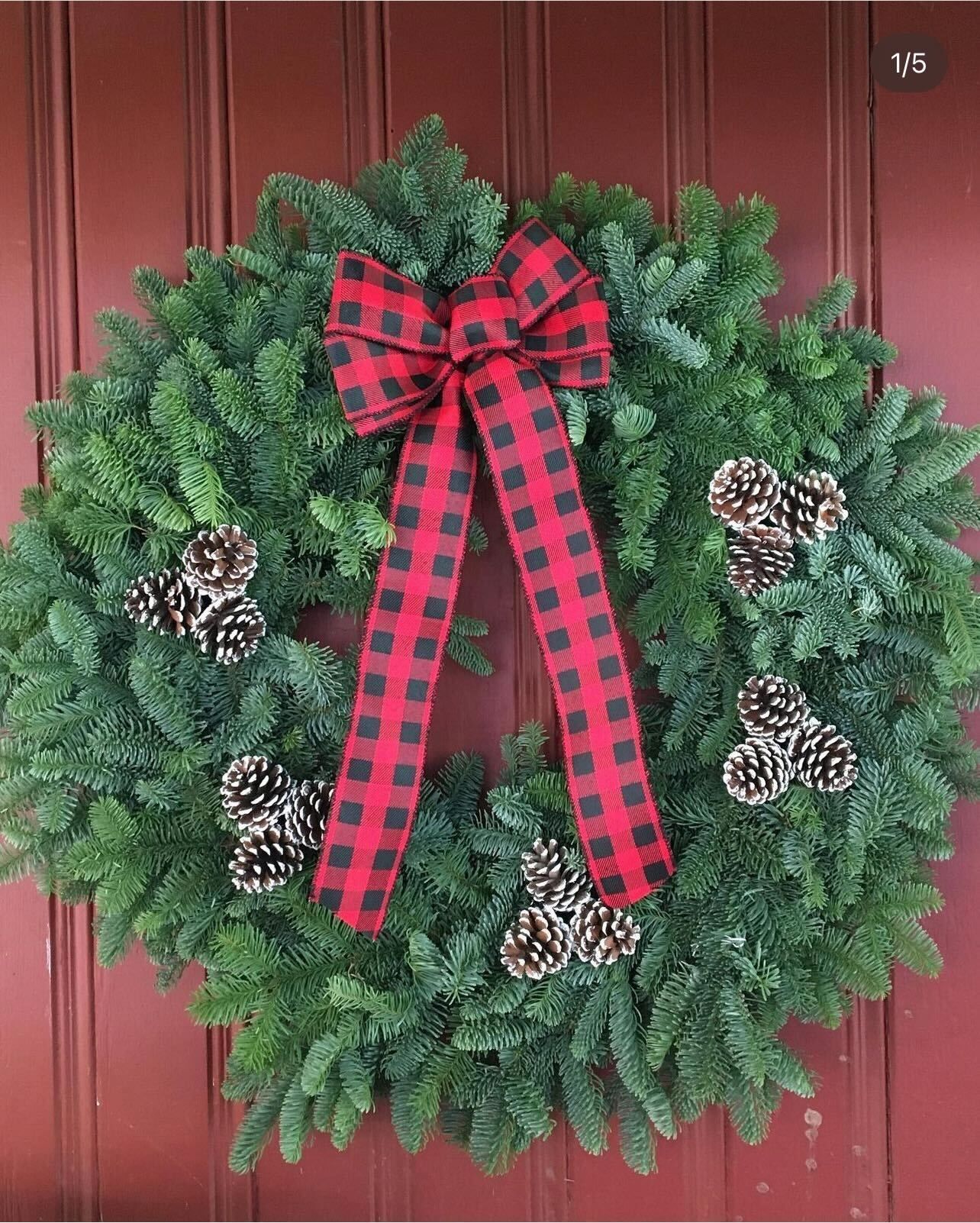Our Services

At Evergreen Farm, we believe that preparing for the holidays should be simple, memorable, and fun. Our team is dedicated to making your experience stress-free by offering a range of services, for picking out the perfect tree or adding festive greenery to your home. With warm hospitality, helpful hands, and plenty of seasonal cheer, we’re here to ensure your visit is one to remember.
Freshly Cut Trees
We offer choose & cut trees from our field. We also have additional freshly cut trees. We'll cut your tree, shake it, bale it, drill a hole in it if desired, and tie it on your car.
Wreaths & Other Accessories
We also have a lot of wreaths, roping, porch pots, tree accessories, tree stands, etc.
Custom Decor & Grave Blankets
We offer grave blankets and will customize them - or any greenery - for you.
Cider, Cookies & Cheer
You'll enjoy complementary cider, cookies, and cheerful holiday music while we take care of your selected tree. We welcome the leashed family dog to join the fun!
Frequently Asked Questions
Working Hard for Your Picture-Perfect Christmas

Catch a glimpse of our team in action, making sure every detail is perfect for your holiday experience.
-
Project name here
ButtonThis is the text area for this paragraph. To change it, simply click and start typing.
-
Project name here
ButtonThis is the text area for this paragraph. To change it, simply click and start typing.
Project name here
This is the text area for this paragraph. To change it, simply click and start typing.
Project name here
This is the text area for this paragraph. To change it, simply click and start typing.















